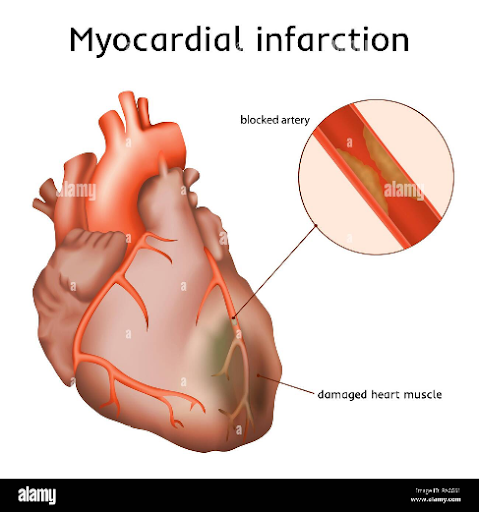By R. Sheeler, MD.
Did you know that 20-45% of Heart Attacks can be silent heart attacks that are not detected at the time that they occur.
A heart attack occurs when a blood vessel becomes blocked and the downstream area of the heart that was dependent on that blood flow dies. When part of the heart muscle dies it is replaced by scar tissue that does not have muscle contraction pump function that healthy heart tissue has.
How does a silent heart attack show up:
- Can be found on an electrocardiogram showing a pattern of old injury to an area of the heart
- Can be found on echocardiogram testing showing an area of the heart muscle that is not contracting
- Can show up on other studies such as CT Scan or MRI Scan that shows scarring or areas where blood flow is reduced or absent
Even if there are no symptoms a silent heart attack is a big problem. Damaging heart muscle can lead to poor pump function and heart failure. Damaged heart tissue is also more susceptible to heart rhythm problems. A prior silent heart attack increases the risk of having another heart attack and death– likely because the same risk factors that caused the silent heart attack are still present increasing the chances of another heart attack.
How come some heart attacks are silent?
Often the patient dismisses mild symptoms such as chest, back, arm, neck, jaw pain as minor when in fact they are signs of a heart attack.
It is also possible that people with certain conditions may not experience the usual pain with heart attacks. These include:
- Women – who are more likely to have atypical symptoms and less likely to have clear cut chest pain
- People with Diabetes – may have nerve damage that limits the sensation of chest pain that can occur with heart attack
- Older People – may have decreased pain perception
- High Blood Pressure – increases the risk of prior heart attack even without symptoms
What to do?
Consider having regular electrocardiograms or cardiac stress tests like a Stress Echocardiogram that can show silent damage.
Actively participate in cardiac disease prevention by keeping inflammation, cholesterol, blood sugar and blood pressure in health ranges. Avoid smoking.
Exercise regularly
Don’t ignore symptoms that seem minor such as mild chest pain with exertion
SOME COMMON THINGS A ROUTINE ELECTROCARDIOGRAM CAN SHOW IN A PATIENT WITHOUT ANY SYMPTOMS:
- Silent heart attack
- Left Ventricular Hypertrophy [thickening or enlargement of the main pump heart muscle
- Electrical system problems such as heart block or fascicular block [block of one of the branches of the hearts electrical system. These can be present from birth, show up with a heart attack or occur because of diseases such as hemochromatosis where excess iron damages the electrical system of the heart
- Heart rhythm problems such as atrial fibrillation




